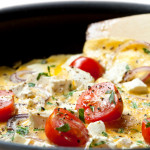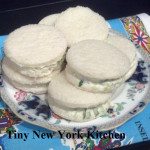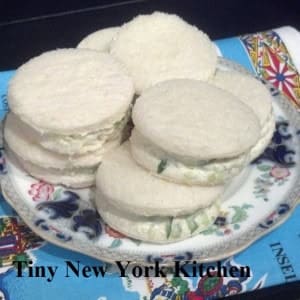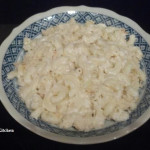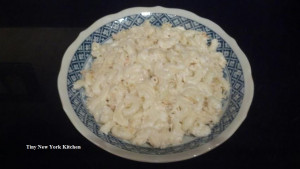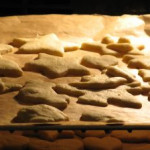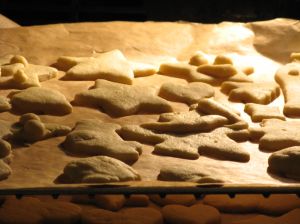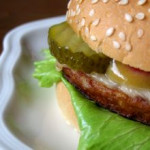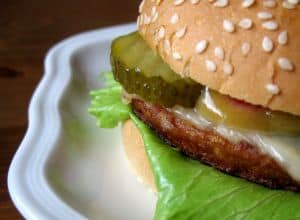Today is Constitution Day (Constitution Week is from Sept 17th – Sept 23rd), which commemorates the formation, and signing of the U.S. Constitution by thirty-nine brave men on September 17, 1787, recognizing all who, are born in the U.S. or by naturalization, have become citizens. Our Constitution was signed on September 17, 1787, and after an extended period of national conversation and with the promise of a bill of rights, it became the supreme law of the land. We are a proud Nation of immigrants. Throughout our history, immigrants have embraced the spirit of liberty, equality, and justice for all – the same ideals that stirred the patriots of 1776 to rise against an empire, guided the Framers as they built a stronger republic, and moved generations to bridge our founding promise with the realities of time.
Many people wonder what it was like in those days. What did people eat? Today, it is possible to travel from coast to coast, at any time of the year, without feeling any need to change your eating habits. Sophisticated processing and storage techniques, fast transport, and a creative variety of formulated convenience food products have made it possible to ignore regional and seasonal differences in food production – if it is desirable or necessary for personal reasons.
It was not always so. As early Americans moved about, they had to change their eating habits to fit local conditions. Climate was one of the major limiting factors, but soil water and other vegetation play a part. It’s easy to romanticize the food supply of early America, and there is no question that in many ways it was a vast improvement over that available in many of the immigrant’s homelands. Inadequate yields, seasonal availability of produce, nutrition-robbing preservation techniques, constant labor, continual attention to schedules and danger of contamination were some of the factors bearing on the food supply that sustained our forefathers and foremothers as they developed our country.
Most early immigrants from Europe were accustomed to a limited, monotonous diet. Fresh meat was an infrequent main course on the tables of the working classes. Two meal’s worth of meat per week was regarded as good treatment for a servant. Game was the property of the Royal Family in most countries, and killing a deer was a capital offense. “Milk, butter and cheese are the laborers dyet, and a pot of good beer quickens his spirit,” said Breton, an English author, in 1626.
Only a handful of vegetables were known in Europe, prior to the discovery and settling of the New World. The short list included root vegetables such as beets, carrots, radishes, turnips and parsnips, plus cabbages, onions, leeks and lentils. There was a considerable variety of fruits and berries, but they were available only during a short harvest.
To Be Continued…
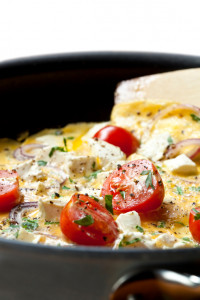 Pack Your Omelet Full Of Goodness
Pack Your Omelet Full Of Goodness
Omelets are one of those dishes that you can have for breakfast, lunch or dinner. The versatile omelet is low in calories too especially if you start with one egg and two egg whites (about 100 calories). Add the fillings of your choice and you have a protein packed meal that will satisfy your hunger.
Cheese Choices
Choose 1/4 cup of one of these cheese for your omelet.
Shredded Swiss
Shredded Cheddar
Crumbled Feta
Vegetables
Choose as many vegetables as you want because they are full of fiber and low in calories.
Chopped Broccoli
Sliced Mushrooms
Chopped Tomatoes
Proteins
Choose1/4 cup of these delicious proteins.
Smoked Salmon
Turkey Bacon
Ham
Optional
Choose one of these for a total treat.
Sautéed Potatoes
Avocado
Crème Fraiche
Summer is here and why pay top dollar going out when you can make delicious hot dogs at home? Here is a guide to the different ways Americans make their frankfurters around the country. I had the Sonoran style hot dogs while I was in Tucson in February and absolutely loved them.
New York Style
Served with brown or German mustard and sauerkraut or onions cooked in tomato paste.
Chicago Style
Served on a poppy seed bun with mustard, pickle relish, sport peppers, onions, tomatoes, dill pickles and celery salt. Pepperoncini can be substituted for sport peppers.
Kansas City Style
Served on a sesame seed bun with brown or German mustard, sauerkraut and Swiss cheese.
Atlanta “Dragged Through The Garden” Style
Serve topped with coleslaw.
Detroit “Coney” Style
Served with chili, onions, mustard and cheddar cheese.
Seattle Style
Served with cream cheese and grilled onions.
Phoenix/Tucson “Sonoran” Style
Served as a bacon-wrapped hot dog with pinto beans, onions, tomatoes, mustard, mayo, jalapeno peppers and cheese.
Austin “Tex-Mex” Style
Served with queso, guacamole and crushed tortilla chips.
San Francisco “Wine Country” Style
Served with red wine caramelized onions and goat cheese.
Miami “Cuban” Style
Served with mustard, pickles and Swiss cheese.
Put mom in a good mood this Sunday and make Mother’s Day a special day with a memorable brunch. When my children were younger they often made me breakfast in bed for Mother’s Day. They made me promise to stay in bed propped up on pillows while they wobbled trays of pancakes, sausage, fresh juice and chopped fruit to my bed. These breakfasts made by little hands were so sweet. They were so proud of themselves that they would hop up on my bed all smiles asking if they each could have a sausage or piece of bacon. Before I knew it they would eat my entire “breakfast in bed.”
Eggs Benedict
Mother’s Day Scramble
Eggs Florentine With Waffles & Hollandaise
Pecan Pancakes
Lemon Curd French Toast
Melon Balls
Mixed Berries With Crème Fraiche
Raspberry Parfaits With Yogurt & Granola
Cherry Pecan Scones
Cherry Almond Quick Bread
Roasted Tomatoes
Hash Browns With Fresh Chives
Sweet Potato Hash Browns
Smoked Sausage
Smoked Bacon
Smoked Salmon
Freshly Brewed Coffee or Tea
Fresh Squeezed OJ
Fresh Squeezed Grapefruit Juice
Mother’s Day Mimosas
Citrus Spritzers
Bloody Marys
Forget that horrible box stuff and make your own delicious Mac & Cheese. Here is a different spin on the usual cheddar cheese macaroni & cheese dish. Using the brie, cream cheese and mascarpone makes it nice and creamy. I used macaroni pasta here, but you can use pasta shells or farfalle pasta.
INGREDNTS
2 Tablespoons Unsalted Butter
1/2 Teaspoon Kosher Salt
12 Ounces of Farfelle or Macaroni Pasta or Shells
7 Ounces Brie (Rind Removed) Cut Into Chunks
5 Ounces Cream Cheese Softened & Cubed
3 Large Eggs Lightly Beaten
1 Cup Mascarpone Cheese
1 Cup Grated Parmigiano Reggiano Cheese
3/4 Teaspoon Black Pepper
1/4 Teaspoon Finely Grated Nutmeg
Heat your oven to 375º F. Butter a 2 quart gratin dish. Bring a large pot of heavily salted water to a boil. Cook pasta to al dente and then drain well. DO NOT rinse the pasta. Transfer the hot pasta to a large bowl and toss immediately with Brie and cream cheese until melted and smooth. In a separate bowl, whisk together the eggs, mascarpone and Parmigiano. Stir the egg mixture into pasta. Season with the kosher salt, pepper and nutmeg. Place the pasta into the prepared baking dish. Bake for 30 minutes. Remove from the oven and serve immediately. Serves 6
Nothing says grilling season like a hot & juicy burger. You can enjoy an American favorite that is new and improved by giving your burger a healthy twist without skimping on flavor. Here are some things that you can do to create a better burger.
Choose Your Patty: For a classic burger it is important to choose the leanest ground beef available. Purists will tell you to use the fattiest ground beef, but if you are trying to cut down on fat and create a healthier burger try using lean meat. I like to use ground sirloin. You also might try: Ground Turkey Breast (usually 99% fat free); Ground Buffalo/Bison (naturally sweet & lean); Veggie Burgers (usually has one seventh the saturated fat of traditional burgers); Fish Burgers; Salmon Burgers (rich in omega-3); Mushroom Burgers (made from large grilled Portobello mushrooms).
Jazz Up Your Burgers: Spices and condiments are key here. Mix in or season your burgers with salt free or low sodium spices. You can get creative here to suit your tastes or mood. I like to use Cajun spices, Italian spices and sometimes a touch of curry spices. You can get a fiber boost and add texture by adding chopped or grated vegetables or herbs.
To Bun Or Not To Bun: Who says a burger must be served on a traditional white bun? Feel free to serve your burgers on 100% whole grain buns or pita pockets. If you are going for a totally bunless burger you might want to try sturdy lettuce or cabbage leaves.
Accessorize: The tasty trimming options are endless, but here are a few ideas. Choose condiments that are low in fat, sodium and sugar. Read the labels on varieties of ketchup, mayonnaise, mustard, relish and salsa. Choose low-fat or fat-free varieties of cheese. The white cheeses tend to be lower in fat such as Swiss or provolone. Top your burger with grilled onions and sliced tomatoes. Instead of using iceberg lettuce try radicchio, arugula or romaine. While you’re at it add cucumber slices, radish slices or red pepper rings for some extra crunch.



